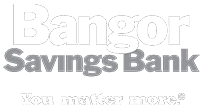
Debit cards have grown in popularity over the years because they are easy and convenient to use.
Using your debit card is an easy alternative to writing a check. When you go to your local grocery store, you can take out your debit card and pay for your groceries. You will not have to pay that money back with interest as you would with a credit card. Instead, the dollars are taken immediately out of whatever bank account is connected to your debit card.
Usually, you'll have to enter a PIN, your personal identification number, when you complete a debit transaction. After you swipe your debit card through a reader, you'll be prompted to enter your PIN before the purchase is complete. This protects you in case your debit card is lost or stolen.
Ensure that your debit card PIN is difficult for anyone else to guess. For example, avoid using your birth date or street address.
Cautions
Debit cards come with the obvious benefit of not having to carry cash with you that may be lost or stolen.
There are, however, some precautions to take when using a debit card. First, carefully track your purchases. Your debit card is linked to your checking account, and if you do not haves the funds available, you run the risk of over-drafting your account. That could lead to penalties from your bank, bounced checks, missed payments, and/or late fees.
So, before you swipe that debit card, make sure you have enough money in your account to pay for your purchases.
Secondly, keep an eye on your accounts for any unusual purchases. Cyber criminals may find a way to gain access to your financial accounts. If you do suspect someone is using your card information, immediately call your bank.
